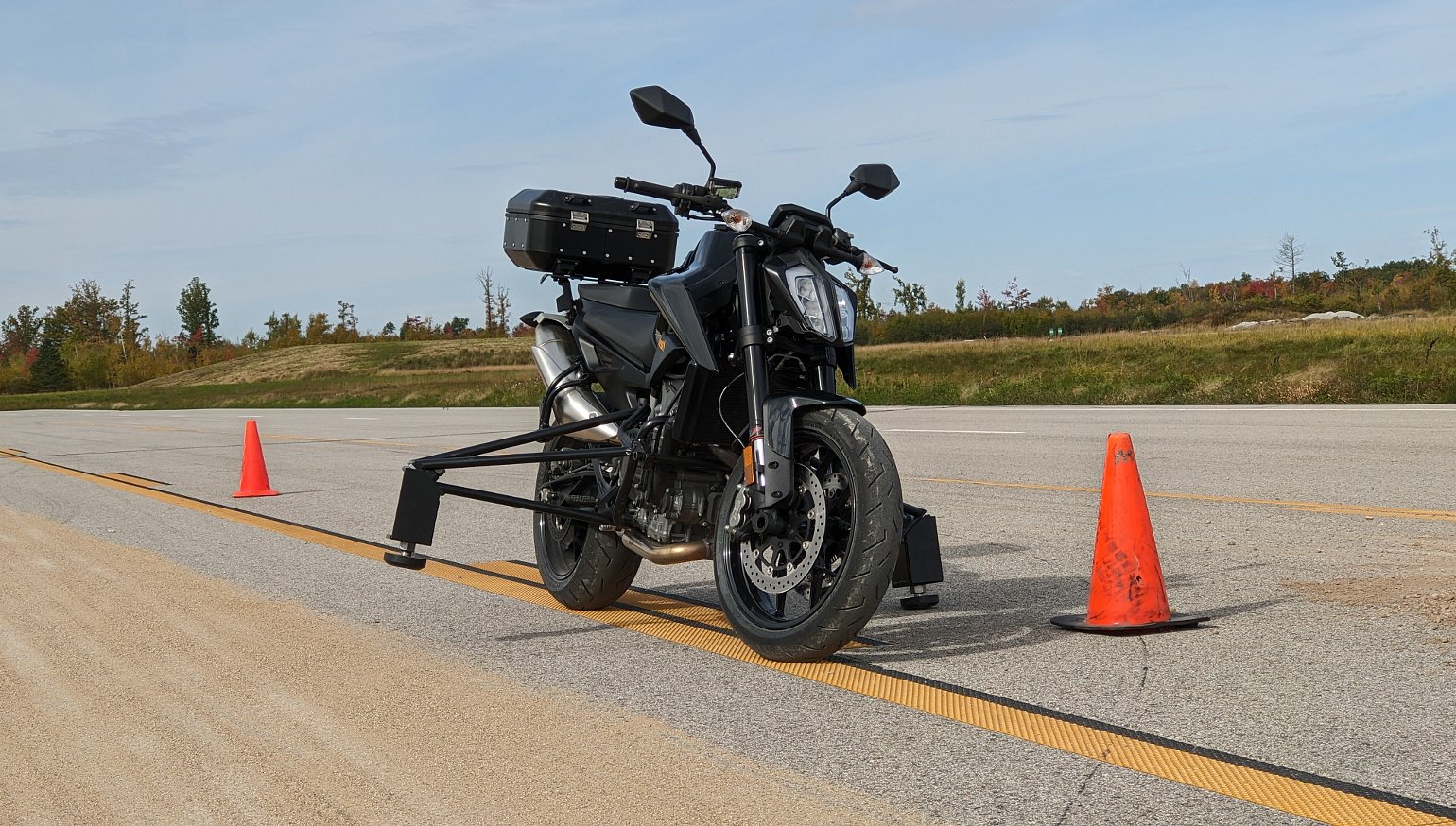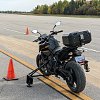When you read a motorcycle review here on Common Tread, safety systems (like traction control and blind spot monitoring) are always part of our evaluation. We’ll tell you which technologies are on board, and we review them to the best of our abilities, but we rarely test all those systems at their limits on the street.
That’s especially true on a first ride reviews of 200 miles or less. That said, we need to know what our safety nets can do when things go wrong on the road.
Continental invited me to try out some advanced rider aid systems (ARAS) on two very unusual motorcycles. The first test mule was a KTM 790 Duke with removable outriggers and Continental’s own maps for braking and fueling. The outrigger sliders allowed me to try some emergency braking maneuvers without emergency consequences. Continental’s other test bike was a Harley-Davidson Sportster modified with rear-facing radar for blind spot monitoring. Before hitting the proving grounds, the Continental Engineering Services team brought me up to speed on what they’re doing for motorcycle safety technologies.
Continental makes a lot more than tires
Just to be clear, we’re talking about the same Continental that makes tires, drive belts, and other components you might already use on your motorcycle. That’s only a small part of Conti’s global business. The German giant designs and manufactures all kinds of stuff. Sensors, actuators, conveyor belts, engineered hardwood, remote key fobs, and even the beer hoses at your local brewery are examples of Continental products.
Continental Engineering Services (CES) is a division within the larger organization that guides manufacturers through the process of adding Conti tech to new vehicles. Let’s say you represent an electric motorcycle startup, and you wanted to put Continental tech on the production bikes. CES would connect your project with built-to-order systems like brake controllers, drivetrain technologies, lean angle sensors, and adaptive cruise control radar, plus all the necessary bits and programming to connect these features on the final product. I’m sure you could spec some Conti tires while you’re at it, too, but CES is more concerned with combining technologies for customers than slinging tires.
“We're the part of the company that can go into riskier, more innovative ventures,” says Tom O’Connell, CES’ head of sales. “CES is the strategic tip of the arrow for newer products. We're able to partner with other business units and serve as a bridge within the company. Basically, there aren't many things we say no to.”
The team plans to expand even further into powersports and two-wheelers in the near future, especially through ARAS and electric mobility. Conti set up a demonstration at a test facility in Brimley on Michigan’s upper peninsula, a short drive southwest from Sault Ste. Marie and the Canadian border. Year-round testing and development includes subzero winters, giant sheets of ice, and snow drifts to put new systems through the wringer. Here, I could try pushing Continental’s latest safety ideas in warm, dry conditions that probably resemble your favorite riding weather.
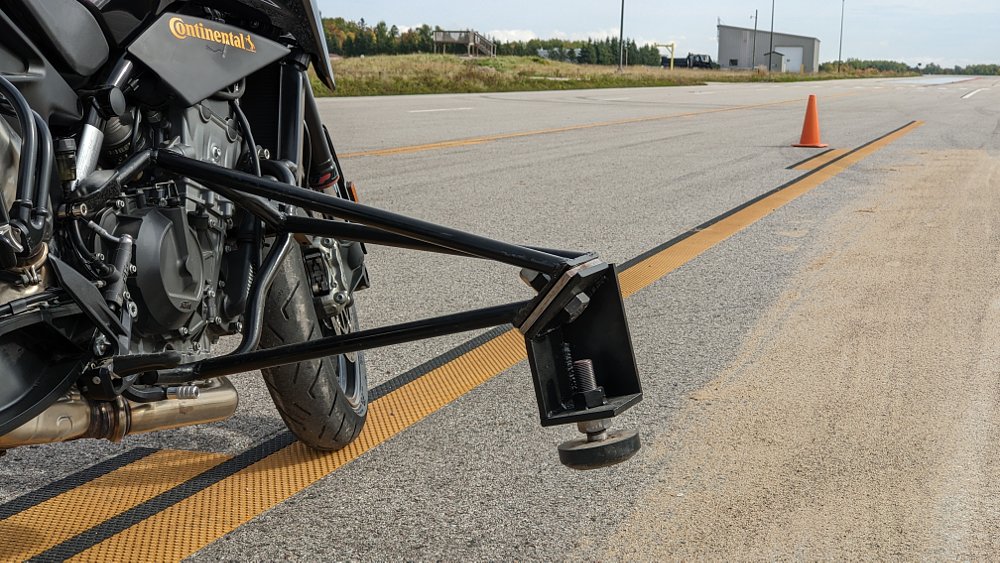
The strangest motorcycle I’ve ever ridden
Before I could start testing anything, I had to learn to ride with sliding outriggers. Continental uses outrigger bikes just like this one when internal test riders are developing new projects. Leaning is strictly limited by the sliders. When parked, the bike sits on one of its outriggers, and that’s the direction to point the wheel when pulling away. The puck will grind for a bit, but the bike naturally pulls upright after a short skid. The rider’s feet should never touch the ground while the bike is running to avoid entanglement with the outriggers, even when coming to a complete stop. Letting the bike tip over onto its sliders involves a bizarre falling sensation until the slider catches you.
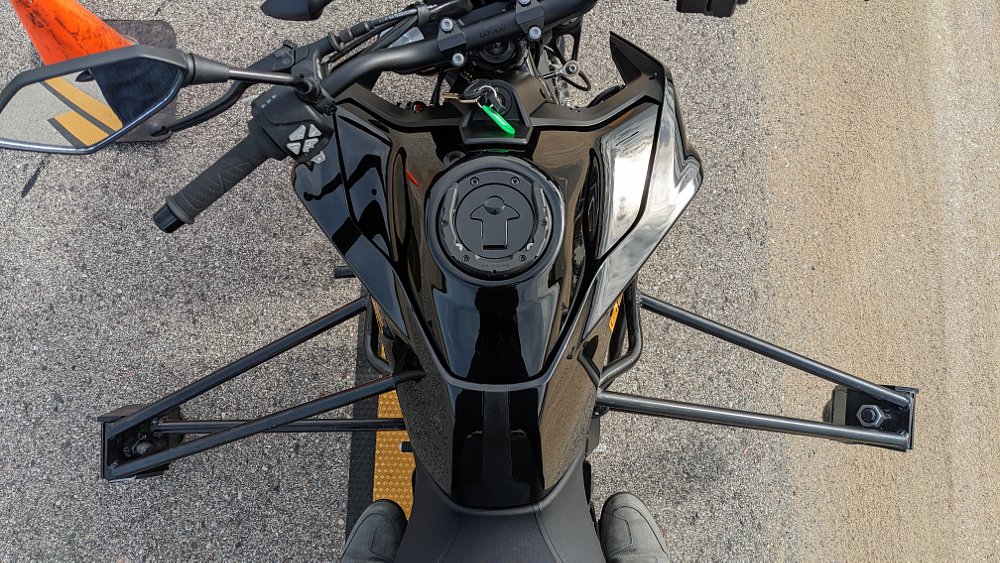
The outrigger bike goes straight with no problem. Turning without leaning took some adjustment for me. Continental’s test rider easily spun the bike around to line up for a straight-line braking test: stopping as hard as possible from 40 miles per hour and watching the warning lights flash as the bike scrubs speed. Outriggers tone down the risk of pushing the braking too far, and I was told to brake as hard as I dared.
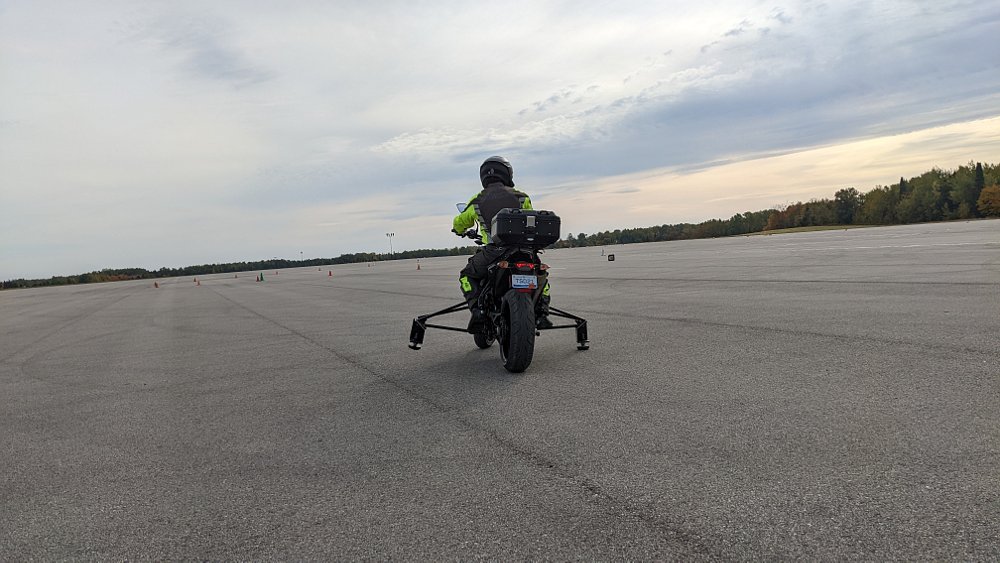
The bike’s stability meant I could give some of my attention to the warning light and pulses of automatic braking feedback as they worked in the background. Modern systems can be extremely subtle. Each time, I feel the brake pulsing wildly to save me, but the action isn’t stabby, even when dropping both anchors. If you were paying attention in your motorcycle safety class, you’ll know that the front brake is much more effective than the rear, and both brakes combined will give the best stopping distance. In my simulated panic stops, modern ABS made sure that distance was as short as possible. Can a pro racer stop in an even shorter distance without ABS? Probably. Can you maintain pro racer levels of brake modulation skill and focus every time you ride on the street? Probably not.
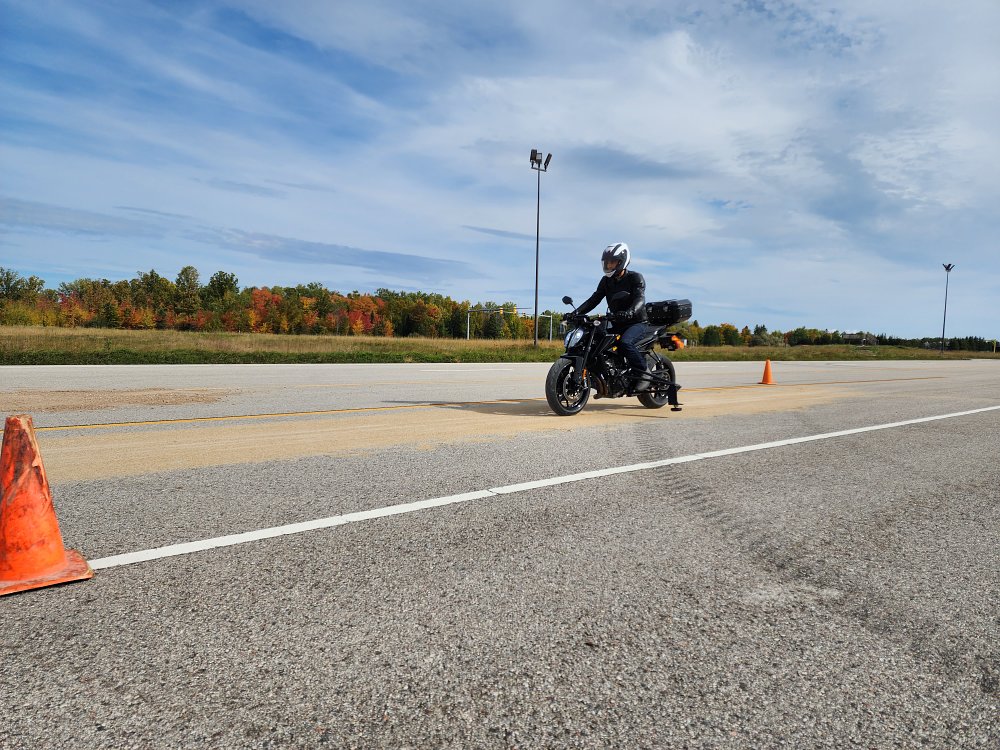
How about trying the same braking scenario with sand across the road? Brake pump chatter when mashing the rear brake in sand feels pretty normal to me since most of my ADV riding happens in the Pine Barrens of New Jersey. Even if you don’t ride off-road, anyone with a modern street bike has probably felt rear ABS intervention a time or two. However, I don’t have much experience clamping the front brakes with maximum force in sand, especially on street tires. Sure, it’s possible to practice all kinds of low-traction braking techniques on your own. (And you should!) But intentionally trying to exceed the limits of traction at the front wheel? In fine sand? That could be expensive and painful practice without the outrigger bike.
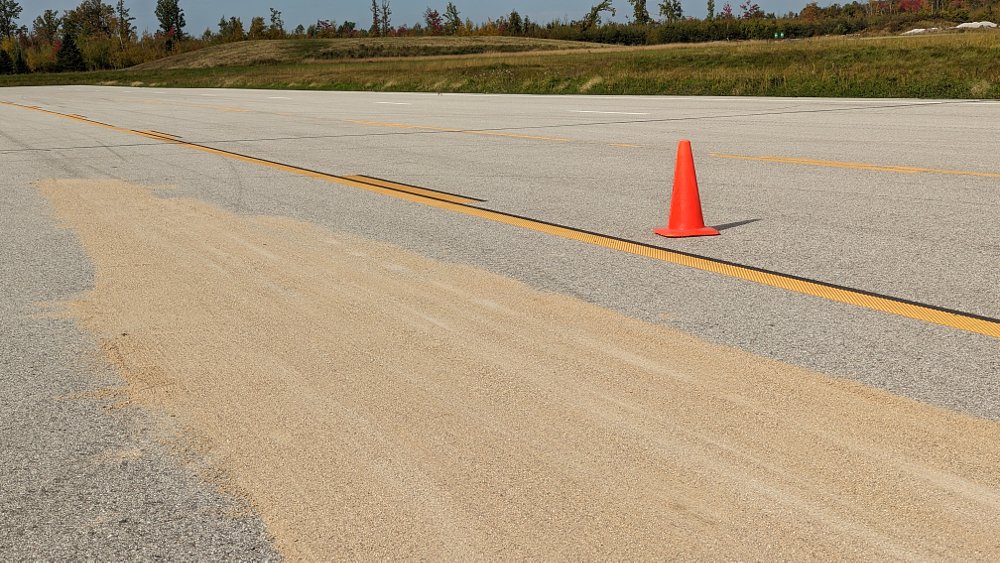
Trying it for myself, I felt the front end waver and recover while the Morse code of pulses from the ABS pump probably spelled choice four-letter words. The warning light flashing tapered off and the bike stopped without any modulation in the lever pull. Obviously the system took longer to stop me in sand, but it wasn’t that much more. Also, I didn’t have to do anything beyond jabbing the brake. The outriggers still hadn’t touched after a few passes. ABS, traction control, and stability control keep an eye on the wheels so riders can focus on the situation at hand.
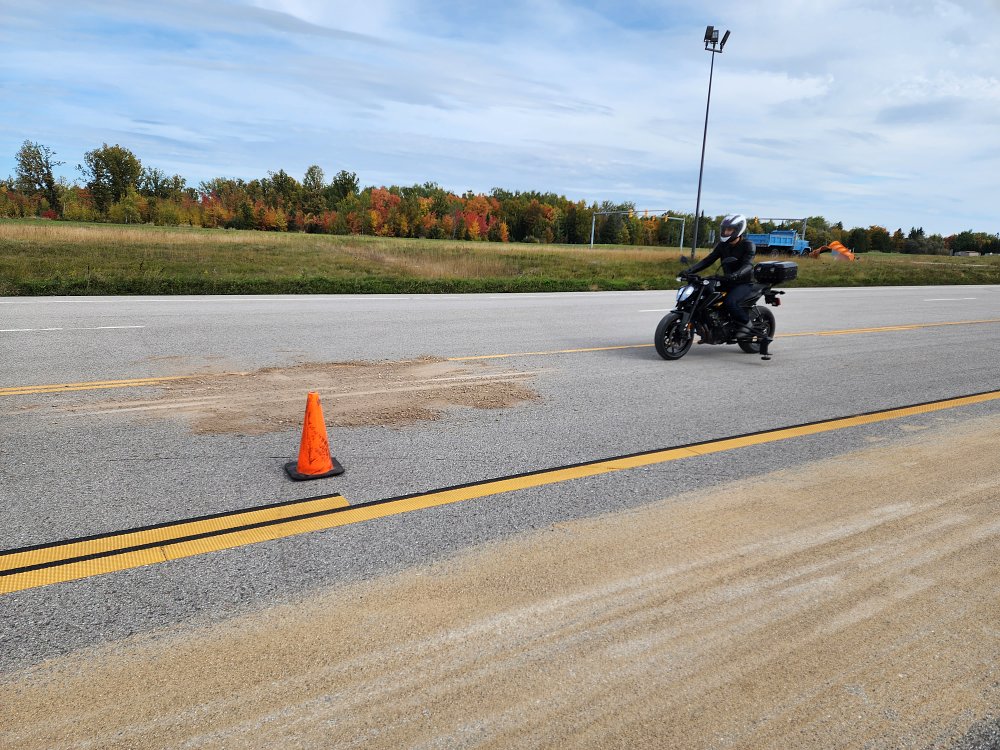
The same thing happened when braking hard on pavement, then hitting loose debris mid-stop. The pump’s tempo changed as the tires passed over a dirt pile, losing and regaining grip. Again, no jarring feedback. I doubt you’d ever notice any of this in an adrenaline-charged situation.
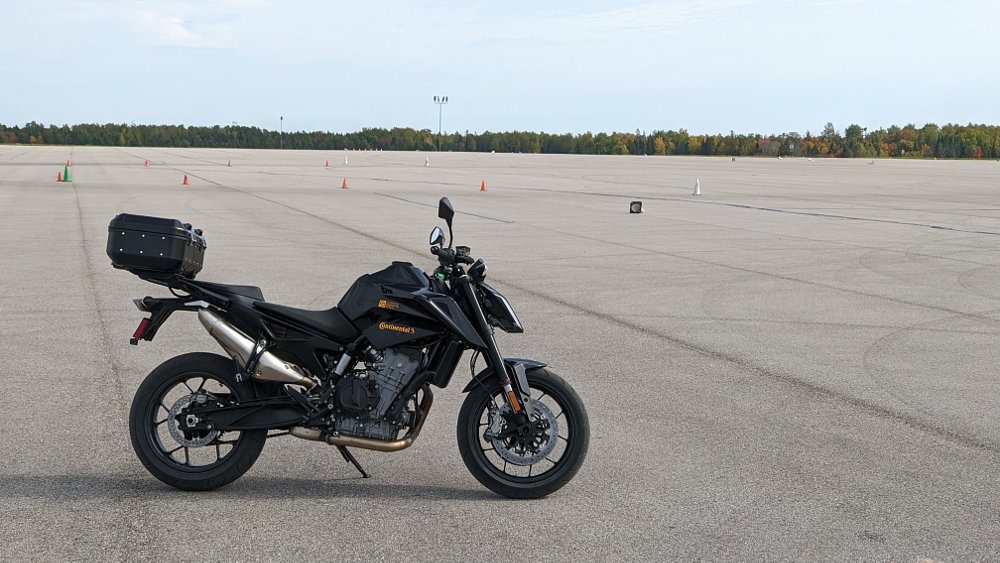
For a final test on the Duke test bike, the outriggers were removed and a little road course was laid out. Continental modified the KTM with safety-forward tuning and tech. The reps compared it to a Road mode with more safety nets. I tried riding like a moron to trip some of those safety systems. Whack the throttle open in a corner? The bike translated that input into smooth and progressive acceleration instead of dumping me mid-corner. Drop a gear too early? The rear wheel just wouldn’t break loose on me. I tried to recreate the scenario of unintentionally lofting the front wheel, but the anti-wheelie control kept me planted. It didn’t seem to matter how sloppy my inputs were. The bike always smoothed over my abuse. It was like riding on Easy Mode with the sensitivity turned down. You might think that sounds boring or overly restrictive, and it would be if you’re looking for all-out performance. Keep in mind that this is just an example ride mode meant to showcase features that could be built into motorcycles running Conti’s equipment. After all, ride modes allow one motorcycle to have several different personalities. The manufacturers specify the levels and types of intervention on their production bikes.
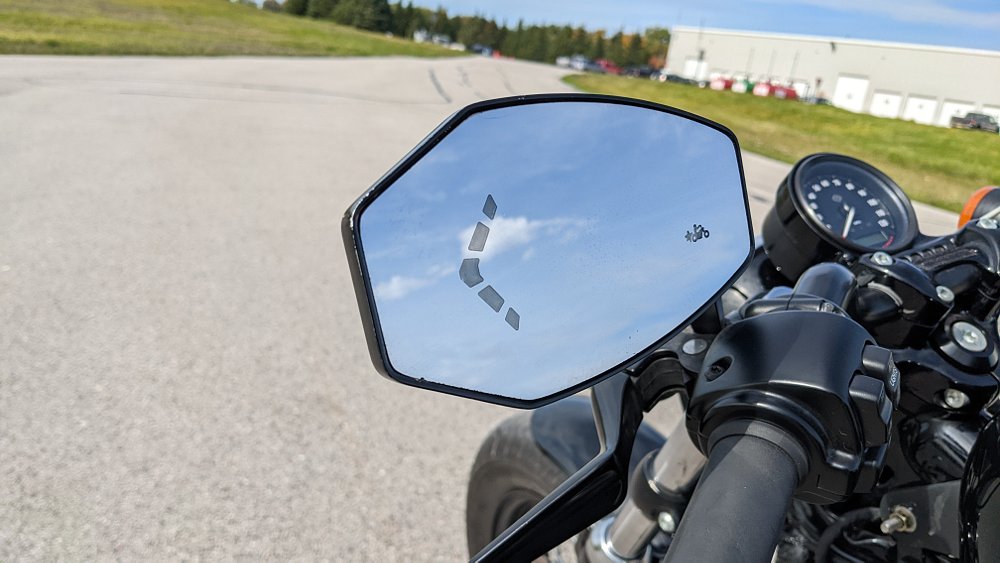
Then it was time for a quick ride on the Sportster. Continental added rear-facing radar to the rear fender and blind spot indicators on the mirrors. Another rider on a Can-Am Spyder followed me around a section of a road course to demonstrate the Sportster’s lean-sensitive blind spot monitoring at work. Blind spot monitoring is already available on some motorcycles, and you’ll see it on plenty of new cars, so this isn’t really brand new technology. Even so, I liked the compensation for lean angle, and the system gave plenty of warning when the Spyder aggressively overtook me in designated zones.
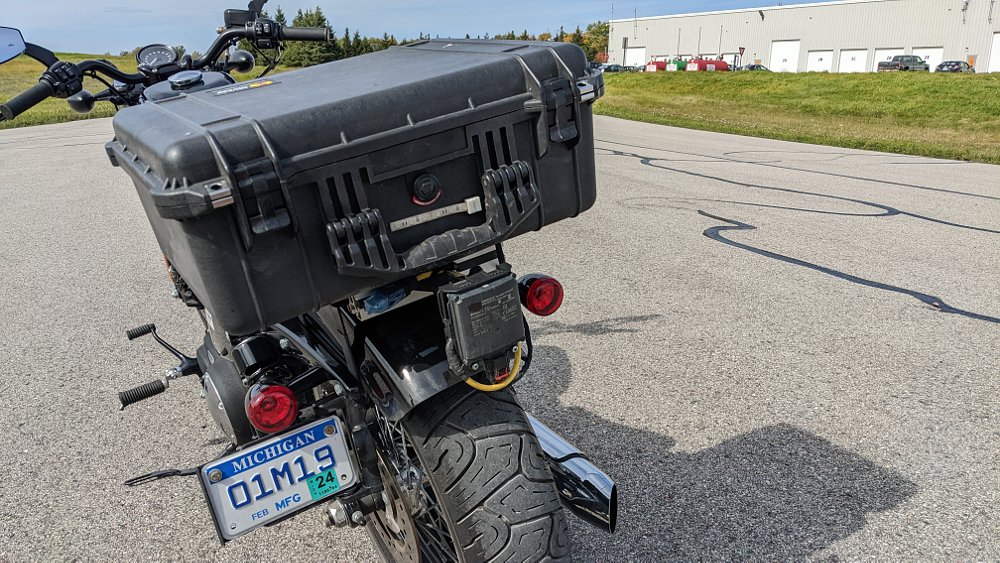
ABS, wheelie control, traction control, blind spot monitoring… None of this is really new technology. However, all of these safety features get smoother, faster, and smarter every year thanks to lots of testing and research at sites like the one in Brimley. Experiencing these systems in a low-risk environment was eye-opening for me because I could push the limits without a trip to the ER. So what can you learn from this?
I think it would be very easy to underestimate what modern brake safety tech can do. Lots of riders talk about how they prefer motorcycles with ABS for the additional safety, but when the time comes to use it, often without warning, how familiar are you with your bike’s stopping power? Do you trust the system enough to let it take over? The way I see it, underbraking due to lack of trust in the safety systems isn’t much better than having no safety system at all.
So set time aside to practice brake technique. Know what automatic braking pulses and traction control intervention feel like. Try skidding to a stop using the rear brake in grass if you don't know where to start. Take time to familiarize yourself with your bike’s settings and features. Finally, know your response to an emergency situation before it happens. How hard are you willing to brake? Do you have enough experience with your motorcycle to trust it? Any safety technology will have a hard time helping you if you can’t commit.




